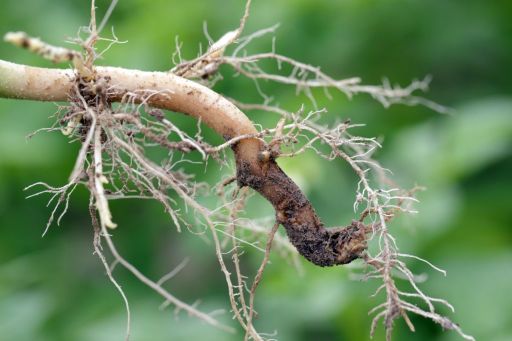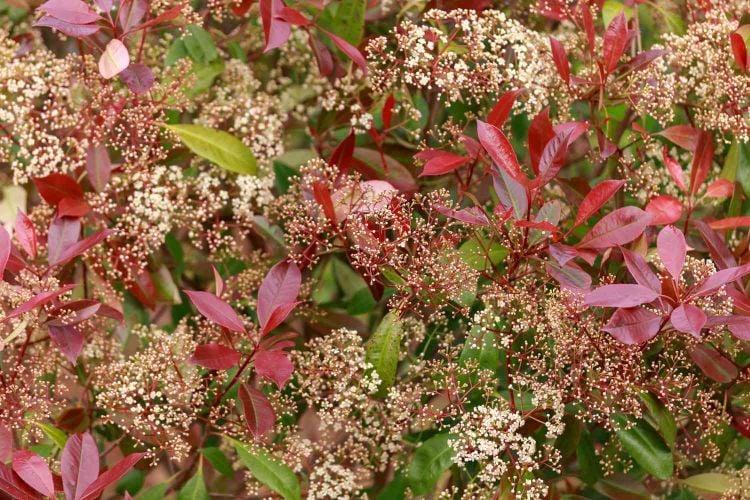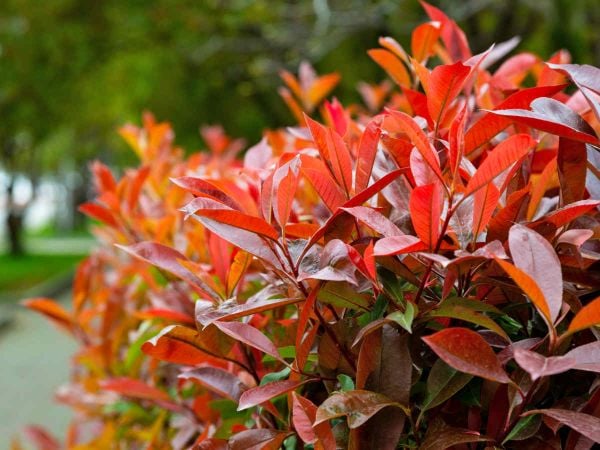Table of Contents
Few plants in the gardening world are as fascinating as the Red Robin with its bright crimson color. This terrestrial masterpiece is prized in gardens worldwide for its vivid red foliage and elegant presence.
It is known by the scientific name Photinia x fraseri Red Robin, and it is a tribute to nature’s capacity to combine beauty and toughness in one graceful package. The topic of whether the Red Robin plant has deep roots or when to prune Red Robin lies in its details.
Beyond its impressive looks, one must also discover what lies under the surface. The root system of the Red Robin, when examined, offers insight into its anatomy, adaptability, and importance, as well as the basis for its perennial attractiveness.
So, let’s get to know about the plant to infer its root system.
Root Structure of The Red Robin

A beautiful evergreen shrub, Red Robin is well known for its eye-catching scarlet color. This plant, a member of the Rosaceae family, is a cross between Photinia glabra and Photinia serratifolia, giving rise to a species that exhibits both striking aesthetic appeal and extraordinary adaptability. Learning about the adaptive nature of the Red Robin plant helps in realizing how dense and effective is the plant structure and how amazingly nature created it.
The flaming red leaf is unquestionably the Red Robin’s distinguishing feature. In the spring, these leaves appear as blazing crimson, gradually changing to a rich, glossy green in the summer. This remarkable change is evidence of the plant’s resilience and flexibility, enthralling observers at every stage of its development.
1. Red Robin’s Genetic Tapestry
The secret to the Red Robin’s distinguishing traits lies in its genetic history. Given that it has two parent species, it possesses the robustness of one and the serrated leaf edges of the other. The plant is resilient in various settings because of its special mix, giving it an amazing aesthetic appeal.
The Red Robin’s amazing capacity for adaptability is demonstrated by the variety of habitats in which it thrives. This plant has admirable tenacity, whether it is residing in well-drained soil or dealing with the difficulty of clayey substrates. Its adaptability to various pH levels and soil types makes it a flexible option for gardeners looking for an aesthetic focal point.
2. The Roots of Red Robin
The Red Robin’s root system is essential to its survival and growth below ground. The plant’s roots, which are renowned for their dense and fibrous network and capacity to anchor it securely into the earth, provide stability even under challenging circumstances. Because of its strong root structure, the Red Robin can endure seasonal changes and many other environmental difficulties, making it a hardy resident of many environments.
Well, the roots of Red Robin are not considered to be that deep; it has developed a structural integrity that performs its function well. It has impressive capacity even though the roots don’t go below enough. Although most of the Red Robin’s roots are focused in the first few inches of soil, they may reach depths of up to 18 to 24 inches. And if the soil is well-drained, it may go even deeper. This depth improves the plant’s capacity to survive.
3. Nutrient Uptake of Roots of Red Robin
Water and nutrients from the soil are absorbed by the root hairs, which are found at the tips of the fine roots. The surface area that may be used to absorb nutrients is greatly increased by these tiny structures. The Red Robin obtains the essential nutrients required for development and vitality because of its effective nutrient absorption system, which also contributes to its general health and lush leaves.
A sophisticated ecology is supported underground by the Red Robin’s extensive root system. Symbiotic partnerships with beneficial soil microbes such as mycorrhizal fungi greatly aid the cycling and absorption of nutrients. These interactions increase the plant’s adaptability and improve the health of the ecosystem as a whole.
Maintenance for Plant Beauty

Strategic trimming and care procedures are necessary to guarantee the Red Robin’s sustained vigor. Regular trimming promotes new growth and keeps the tree’s ideal form while also giving it a rich, full appearance. Because of this meticulous treatment, the Red Robin may thrive and realize all of its beautiful potential.
Beyond its horticultural benefits, the Red Robin has symbolic importance for many people. Its strikingly colored red leaves stimulate feelings of vigor, desire, and renewal. It is a prized addition to gardens, parks, and landscapes worldwide since it is valued as a symbol of new beginnings in numerous civilizations.
Wrapping Up!
With its vivid red leaves, the Red Robin plant is a botanical wonder both above and below the surface. A thick, fibrous network that makes up its root system gives the plant critical anchoring and stability.
Although they are mostly found in the top two feet of the soil, these roots have an amazing capacity to extend down two feet or more, which enables the plant to receive moisture and nutrients even under difficult circumstances.
Due to its flexibility, the plant can flourish in various conditions, making it a beloved addition to gardens and other landscapes. The Red Robin’s roots support a complex ecology and are visually appealing, highlighting the delicate interplay of life in the soil.
It receives nutrition via its roots network, which denotes how the majority of power of the plant actually lies underground. This effective and amazing root structure of the Red Robin provides it a significant place among plants and biodiversity.





